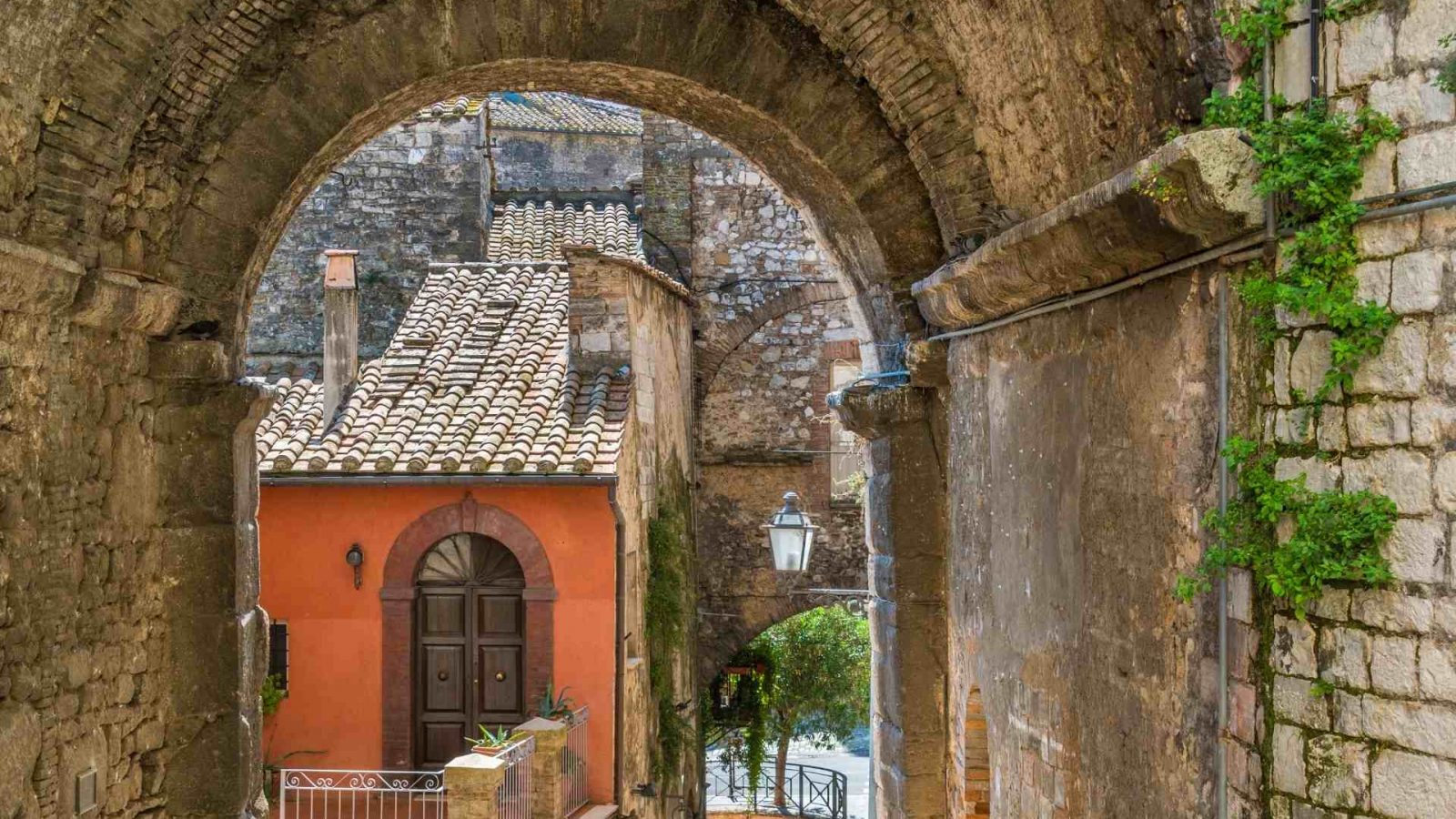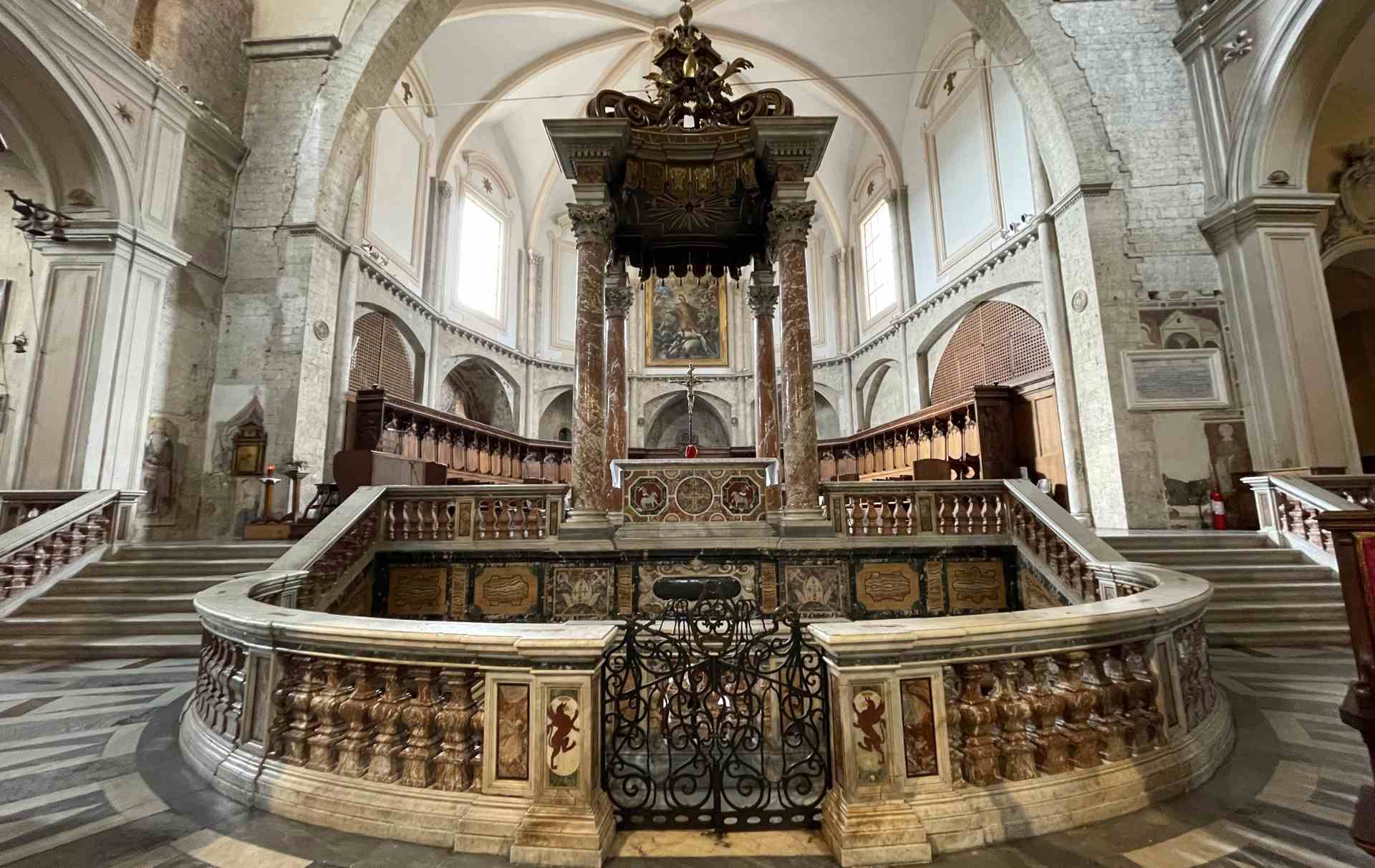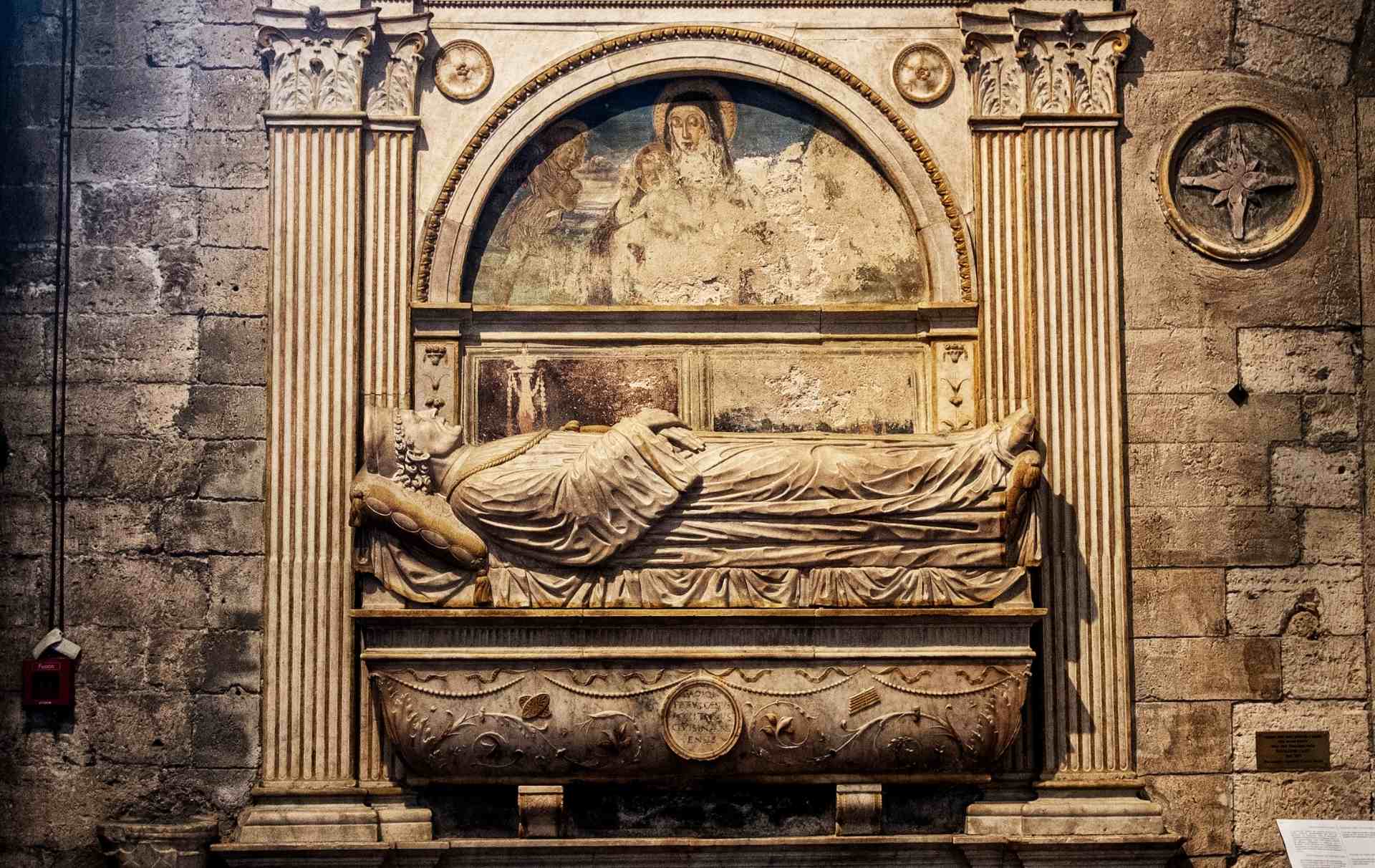Via dell’Arco Romano, for its views and different restaurants where people enjoy the traditional dishes of Narni and more, is one of the most photographed streets of Narni.
The Roman arch, the emperor Nerva and the history of Narni.
Via dell’Arco Romano is characterized, on one side by the beautiful view of the narnese valley, on the other by the staircase that goes down to Piazza Garibaldi and passes under a Medieval Portal – caled Porta Superior – made with the materials of the ancient Roman door of which it preserves the foundation.
The door in the past had two entrances, but it is not easy to go back to the exact construction for the transformations made to the closest buildings and mainly for the Bishop’s Palace.

The bronze of the Narnia Roman emperor.
To highlight one of the most illustrious sons of the City: a bronze bust made in the first years of 2000, which represent Marcus Cocceius Nerva, born in Narni in Umbria in 8 November , 30, consul under Vespasiano and Domiziano, elected emperor on September 18, 96 until its death happened in 98.
Via dell'Arco Romano
Via Arco Romano – 05035, Narni
You can reach the narrow street by walking from Via Belvedere in the old town of Narni.
It is suggested to park the car into the Suffragio Parking lot from which it is possible to reach the old town of Narni through the elevator.
Discover Narni.
Continue to walk with us discovering what to see inside the walls of Narni.
Alternatively, passing through Piazza Garibaldi, you can climb towards the Fortress:
Alternatively:
Or discover the points of interest of Narni and of its territory:

The Beata Lucia
In the historical building of the former orphanage “Beata Lucia”, in Piazza Galeotto Marzio, is hosted the Open-air Museum of the Plein-Air Painters (Museo Diffuso dei

The Altar, the Confession and the Crypt
Characteristic and unique is the architectonic baroque complex, made from the second half of the XVII century , which includes the Major Altar, the Confession

The left aisle
The left aisle, placed on the lateral entrance from Piazza Garibaldi, preserves different works including graves, altars and chapels. The left aisle of the Cathedral of


